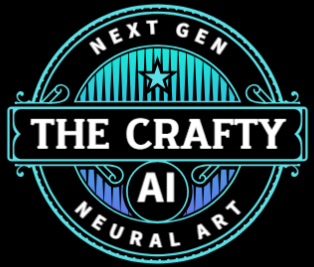Image Prompting
Master AI image prompting. Learn how to write clear, detailed prompts that guide AI tools in the right direction and create stunning, accurate, and creative visuals. Follow the links below to read more.
One of the most powerful aspects of AI image creation is the ability to guide the system using carefully chosen words. This process is called image prompting, and it’s the foundation of turning your ideas into visuals that match your imagination.
At its simplest, a prompt is just a text description of what you want to see. But the way you write it can completely change the result. For example, typing “a cat” might give you a simple drawing of a cat, but “a fluffy orange cat sitting on a windowsill in the morning sunlight, photorealistic, high detail” produces a far more vivid and specific image.
The secret to good prompting is detail. The more context you provide, the better the AI can interpret your vision. Prompts often include information about:
Subject – What the image should focus on (a person, place, object, or scene).
Style – Whether you want it to look like a photograph, painting, sketch, or digital art.
Mood/Atmosphere – The feeling or emotion you want the picture to capture (peaceful, dramatic, mysterious).
Lighting – Soft golden light, neon glow, candlelight, etc.
Composition – Close-up portrait, wide landscape, centered subject, or dynamic angle.
Combining these elements helps the AI understand not just what to draw, but how to present it.
It’s also helpful to experiment with descriptive adjectives. Words like “vibrant,” “dreamlike,” “futuristic,” or “minimalist” can shape the artistic tone. For instance, “a futuristic city skyline at night, glowing neon lights, cinematic style” creates a very different result than “a peaceful countryside village at sunrise, oil painting style.”
While longer prompts give more control, shorter prompts can produce surprising and creative results. Many artists enjoy finding a balance, starting simple and gradually refining. You might begin with “portrait of a woman,” then evolve it into “portrait of a woman in 1920s fashion, sepia-toned, vintage photograph style.” Each step adds more precision.
Another important technique is using negative prompts. These tell the AI what you don’t want in the picture. For example: “a beach scene, no people, no text, realistic.” This helps reduce unwanted elements that the AI sometimes introduces by default.
Remember, prompting is an art form in itself. Two people can use the same AI tool and create completely different results simply based on how they phrase their instructions. Over time, you’ll develop your own prompting style, just as an artist develops a personal touch with paint or photography.
For beginners, the best way to learn prompting is through experimentation. Try different keywords, mix styles, and adjust details. You’ll quickly see how each word changes the final outcome. Many creators even keep a “prompt journal” to save their favorite phrases and settings for future projects.
Image prompting is more than just typing words into a box—it’s a way of collaborating with AI. You bring the imagination, and the AI brings the execution. Together, they unlock a form of creativity that was once out of reach.
With practice, you’ll find that your prompts become a powerful creative tool, allowing you to produce artwork that is not only accurate but also deeply personal and expressive.
© 2025. All rights reserved.

